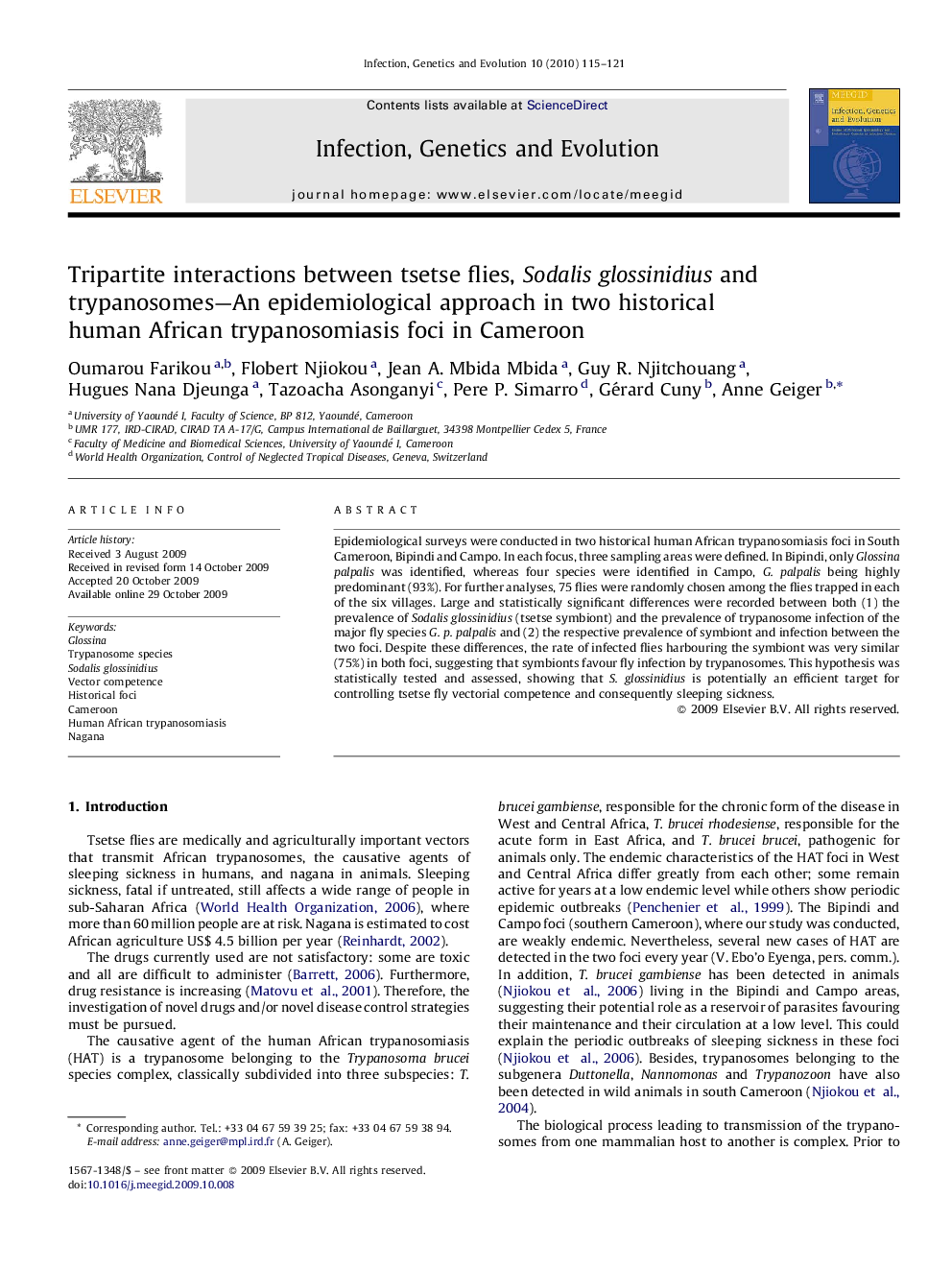| Article ID | Journal | Published Year | Pages | File Type |
|---|---|---|---|---|
| 2823426 | Infection, Genetics and Evolution | 2010 | 7 Pages |
Epidemiological surveys were conducted in two historical human African trypanosomiasis foci in South Cameroon, Bipindi and Campo. In each focus, three sampling areas were defined. In Bipindi, only Glossina palpalis was identified, whereas four species were identified in Campo, G. palpalis being highly predominant (93%). For further analyses, 75 flies were randomly chosen among the flies trapped in each of the six villages. Large and statistically significant differences were recorded between both (1) the prevalence of Sodalis glossinidius (tsetse symbiont) and the prevalence of trypanosome infection of the major fly species G. p. palpalis and (2) the respective prevalence of symbiont and infection between the two foci. Despite these differences, the rate of infected flies harbouring the symbiont was very similar (75%) in both foci, suggesting that symbionts favour fly infection by trypanosomes. This hypothesis was statistically tested and assessed, showing that S. glossinidius is potentially an efficient target for controlling tsetse fly vectorial competence and consequently sleeping sickness.
